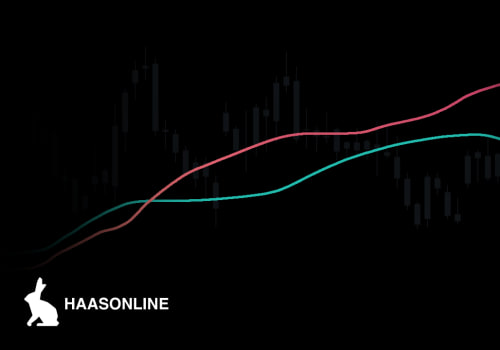In the world of trading, managing risk is essential to long-term success. With the right signals, traders can make informed decisions and manage their risks effectively. In this article, we'll explore the different types of signals that can help traders in managing their risk and how they can be used to interpret and execute trades. We'll start by discussing the basics of signals, how they are generated, and what types of signals are available to traders.
We'll then discuss some of the more advanced strategies for using signals to manage risk effectively. Finally, we'll provide some practical tips for traders on how to use signals in their trading strategies.
In order to effectively manage risk when trading with signals
, it is important to understand the different types of risks associated with them. The most common risks are those related to the signal provider, the signal accuracy, and the market conditions. The signal provider’s performance and accuracy is a major factor in determining the success of your trades, so it is important to do your research and choose a reputable provider.Additionally, market conditions can change quickly, so it is important to stay up-to-date on news and events that could potentially affect your trades. When trading with signals, it is also important to have a risk management plan in place. This plan should include stop-loss orders and take-profit orders that are set ahead of time so that you are not caught off guard by sudden movements in the market. Additionally, it is important to diversify your trades by using multiple signal providers and strategies so that you are not overexposed to any one market or signal provider. It is also important to practice proper money management when trading with signals. This means setting realistic expectations for your returns, having a strict risk/reward ratio, and setting a maximum amount of capital that you are willing to risk per trade.
Additionally, it is important to practice proper position sizing by only risking a certain percentage of your capital on each trade. This will help ensure that you do not overextend yourself financially and remain profitable in the long run. Finally, it is important to remain disciplined when trading with signals. This means following your risk management plan and trading strategy without making rash decisions or taking unnecessary risks. Additionally, it is important to remain patient when trading and not get caught up in the short-term fluctuations of the markets.
By following these tips, traders can increase their chances of success when trading with signals.
Types of Risk
Trading with signals can be a great way to increase potential profits, but it does come with certain risks. It is important for traders to understand the different types of risk associated with signal trading so that they can manage them effectively. These risks include signal accuracy, market conditions, and signal provider performance.Signal Accuracy:
Signal accuracy is a major risk that traders should be aware of when trading with signals. Signals are generated by algorithms and machines, and they may not always be correct.This means that traders should always confirm the accuracy of signals before placing trades.
Market Conditions:
Market conditions can also affect the accuracy of signals, as well as the potential profits from trades. For example, some signals may be more accurate during certain market conditions than others. Therefore, it is important for traders to be aware of the current market conditions and adjust their strategies accordingly.Signal Provider Performance:
The performance of the signal provider is also an important factor to consider when trading with signals. Signals from a reputable provider are more likely to be accurate than those from a lesser-known provider.It is important for traders to do their research and find a reliable signal provider to ensure they are getting quality signals.
Discipline
When trading with signals, discipline is essential to ensure you are able to maximize your potential profits and minimize risk. To be successful, you must have the ability to stick to your trading plan and follow the signal accurately. Here are some tips for staying disciplined: Set Limits: It is important to set limits on the amount of money you can risk per trade, as well as the total amount of capital you are willing to risk in a given period. This will help you stay within your risk tolerance levels and prevent you from overexposing yourself to risk.Focus on Your Strategy:
It is important to have a plan and stick to it.Establish a routine that works for you and stick to it. This will help keep your emotions in check and ensure that you are taking logical decisions.
Don’t Chase Losses:
It can be tempting to chase losses by doubling down or increasing the size of your positions. However, this is rarely a good idea as it can lead to greater losses if the trade does not turn in your favor. It is important to remain disciplined and stick to your predetermined limits.Review Your Trades:
Regularly reviewing your trades can help you identify areas where you can improve your performance.Take time to evaluate how you traded, what worked well and what could be improved. This will help you refine your trading strategy and become more disciplined.
Stay Informed:
It is also important to stay up-to-date with news and market developments that may affect your trading decisions. Staying informed will help you make more informed decisions and reduce the risk of making costly mistakes.Money Management
Money management is a key component of successful trading with signals, and traders should take the time to understand the various strategies available and develop a plan that works for them. Setting realistic expectations is essential for managing risk, as traders should be aware of the potential gains and losses before entering any trade.Additionally, proper position sizing is important in order to ensure that traders do not overextend themselves and remain within their risk parameters. For example, if traders are expecting to make a certain amount on a trade, they should adjust their position size accordingly. This will ensure that the potential losses are kept at a minimum and that the potential gains are maximized. Traders should also be aware of their account size and the impact that larger position sizes can have on their total capital. It is important to remember that trading with signals does not guarantee profits, so it is essential to be aware of both the risks and rewards before entering any trade. In addition to proper position sizing, another important money management technique is setting stop-loss orders.
Stop-loss orders allow traders to limit their losses in case the trade goes against them. By setting a stop-loss order, traders can ensure that their losses are kept to a minimum and that they remain within their risk parameters. Similarly, traders can set take-profit orders in order to lock in profits if the trade moves in their favor. Traders should also be aware of the importance of diversifying their trades in order to reduce their risk exposure. By trading multiple instruments, traders can spread out their risk and minimize potential losses.
Additionally, it is important to practice proper risk management strategies and use stop-loss orders when appropriate. By following these simple guidelines, traders can significantly reduce their risk and improve their chances of achieving success when trading with signals.
Risk Management Plan
Having a risk management plan in place can help protect traders against sudden movements in the market. A risk management plan should include strategies that limit losses and maximize profits. This could include setting stop-loss orders, limiting the amount of capital invested in any single trade, or diversifying investments across different asset classes.Additionally, traders can use signals to help identify potential entry and exit points for profitable trades, and to set realistic targets for profit and loss. Traders should also consider using tools like risk/reward ratios to help manage their risk. This is a ratio of the potential profit to the potential loss that is associated with a particular trade. For example, if a trader is willing to risk $100 on a trade with a potential reward of $200, then they would have a risk/reward ratio of 2:1.By setting a certain risk/reward ratio, traders can more easily manage their risk levels. Finally, traders should make sure that they are well aware of the particular signal they are using. Knowing the signal's strengths and weaknesses can help them manage their risk appropriately and make informed decisions about when to enter and exit trades.
Having an understanding of the signal's past performance can also help traders make better decisions. In conclusion, managing risk when trading with signals requires a combination of understanding the different types of risks associated with them, having a risk management plan in place, practicing proper money management techniques, and remaining disciplined. By following these tips, traders can increase their chances of success when trading with signals. The key to mitigating risk when trading with signals is to take a proactive approach to understanding the different types of risks involved, having a risk management plan in place, properly managing money, and remaining disciplined. By doing so, traders can maximize their potential profits while minimizing their potential losses.












Leave Reply